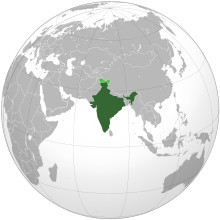The profitability of generics companies in India is under pressure, according to a presentation by Mr Alok Sonig [1].
India is one of the most densely populated parts of the world. In 2011, a total of 1.2 billion people lived in India, accounting for 17.5% of the world’s population. The Indian population is becoming more affluent, with increasing disposable personal income. On the other hand, it is also following the worldwide trend of becoming an increasingly ageing population.
India has risen from being the 15th largest pharmaceuticals market in 2007 to 12th in 2011 and is expected to become the 8th biggest in 2016. India’s pharmaceuticals market has a compound annual growth rate (CAGR) of 12% post price controls. Growth is being driven largely by the increasing affordability of prescription drugs and accessibility. Underlying factors contributing to growth also include:
- Increase in diagnosis and treatment of chronic diseases
- High growth in rural areas due to improved healthcare provision
- Mergers, acquisitions and partnerships with big pharma
- High growth from the hospital sector
Chronic therapies such as treatment of cardiac problems, diabetes and neurological disorders, have grown much faster than acute therapies mainly because of changing lifestyles, increasing affordability, awareness and access to treatment.
The changing Indian regulatory environment is, however, reducing the number of new launches compared to previous years. There were 258 new product approvals in 2011, compared to 65 in 2012, and only 50 in 2013.
The Drug Price Control Order (DPCO) of 2013, which affects both brand-name and generic drugs, lists 348 drugs as ‘essential’ and therefore subject to price control [2]. The DPCO places 60% of the market under price controls, which are expected to lead to price reductions of up to 80% in ‘essential drugs’. At the same time there has been a dramatic reduction in the number of clinical trials taking place in the country. In 2011, there were 325 clinical trials approved in India, compared to 262 in 2012 and only 5 in 2013.
Historically the Indian pharmaceutical market has been driven by the large number of new drug launches, however, with reducing opportunities, growth from new launches will be challenging. Large brands (> US$5 million) are gaining importance, but driving growth from these drugs continues to be a challenge. As a result of such challenges and other pressures, Mr Sonig concludes that the profitability of many Indian players is coming under increased pressure.
Related articles
India urged to drop cost-based drug policy
India plans further cuts to drug prices
India announces free drugs for all―generics only
References
1. Sonig A. Indian pharma market. IGPA 16th Annual Conference, Brussels, Belgium, 9-11 December 2013.
2. GaBI Online - Generics and Biosimilars Initiative. India introduces new drug pricing control [www.gabionline.net]. Mol, Belgium: Pro Pharma Communications International; [cited 2014 Apr 25]. Available from: www.gabionline.net/Policies-Legislation/India-introduces-new-drug-pricing-control
Permission granted to reproduce for personal and non-commercial use only. All other reproduction, copy or reprinting of all or part of any ‘Content’ found on this website is strictly prohibited without the prior consent of the publisher. Contact the publisher to obtain permission before redistributing.
Copyright – Unless otherwise stated all contents of this website are © 2014 Pro Pharma Communications International. All Rights Reserved.








 0
0











Post your comment